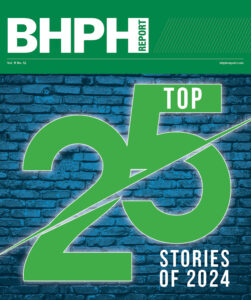Shilson: 11 Strategies for BHPH Success from a Financial Perspective

Success in buy-here, pay-here is frequently measured by how many vehicles a dealer sells each month or year. Although sales are important, this commentary will focus on other areas which are important to BHPH success.
“Keeping them sold” is important to long-term success and requires good underwriting and collections, efficient systems and processes, a cash efficient business model, financial flexibility, a compliance management system, and portfolio metrics. I will discuss each of these in this article.
A careful look at the most successful BHPH operators of today reveals that they:
1. Manage credit risk successfully.
2. Utilize a cash efficient business model which generates an appropriate return on their investment.
3. Match the right customers with vehicles their customers can afford.
4. Avoid trial and error mistakes which cost them millions of dollars.
5. Learn from their bad debt losses so they don’t repeat them.
6. Handle collections consistently and maximize recoveries.
7. Maintain financial flexibility with the goal of increasing their equity.
8. Control operating expenses through efficiencies created by implementing technology.
9. Resolve customer complaints promptly before they escalate into litigation and regulatory problems.
10. Have a compliance system to avoid legal and regulatory mistakes.
11. Use metrics to monitor portfolio performance and to adjust their underwriting.
In general, it takes more skill and expertise (as well as capital) to be successful in the BHPH industry today.
Let’s now look more closely at the attributes I mentioned above.
1. In order to manage credit risk successfully, operators must be good underwriters and use experience, technology and training to identify those customers who will repay them. This begins with a careful evaluation of customer attributes including their capacity, ability to pay, stability and credit history. This approach spells (and results in) cash!
2. Although many different business models are used in the industry, the most successful models maximize cash return. That is, future cash flows, adjusted for losses, generate an appropriate return on the capital invested. Every operator should know the return they expect before making a significant investment. However, this requires them to estimate future revenues and losses using portfolio analysis. It takes financial expertise, data and performance history to calculate the risk adjusted yield on your portfolio.
3. Good underwriters utilize customer stipulations to put customers in vehicles they can afford (not necessarily the ones they select off the lot). This requires the separation of sales from underwriting.
4. In the capital intensive world of BHPH today, trial and error mistakes have never been more costly. Mistakes are best made by your competitors. Operators need to identify underwriting mistakes utilizing portfolio analysis and make the necessary adjustments periodically. Don’t expect a different result by doing the same things.
5. An analysis of your bad debt losses will help you avoid repeating them. It is much cheaper to correct underwriting mistakes than to keep making them. Determine what works and what doesn’t. The more you learn, the more you will earn.
6. Collections is an art, not a science. It is important to work with customers, but when they don’t pay, the vehicle must be recovered quickly to mitigate losses. Bad debt losses are increasing (due to more cash in deal) so greater recoveries are needed to offset them. Payment device technology helps improve revenues.
7. Financial flexibility is measured by the equity in your business, not by the size of your portfolio. Too much leverage can be a fatal pitfall and ego gets in the way of cash flow!
8. Cost control is essential to both profitability and cash flow. Technology requires an investment in future benefits. Technology expenditures are needed to remain competitive. A fully integrated DMS system is at “the hub of the wheel.”
9. In the competitive environment of today operators must build a bond with their customers so they aren’t lured away by competitors. Operators who effectively use online marketing which is integrated with social media are most successful.
10. A comprehensive compliance system is needed to avoid legal and regulatory mistakes which can cause failure. A chief compliance officer is needed to direct the compliance effort. If you think compliance is expensive, just try the cost of non-compliance.
11. Portfolio metrics which measure default rate, static pool and loss/liquidation rates are needed to raise capital, project cash flow and manage credit risk. These are as important as financial statements and tax returns! Familiarize yourself with these performance measurements and build them into your own business.
At the NABD Boot Camps in Charlotte, N.C., we discuss (in more detail), each of the items above, and provide practical tips and best practices to implement them. Attendees tour the facilities and see one of the nation’s best operations in action.
If the old ways aren’t working like they used to, or if you are new to the BHPH industry, I recommend that you focus on the items above, not just selling. It’s how much you keep that counts. Good luck!
Ken Shilson is president of the National Alliance of Buy-Here, Pay-Here Dealers (NABD), which will host a Boot Camp in Charlotte, N.C., on Aug. 2 and 3 and a BHPH Conference at the DFW Hilton Lakes Executive Center in Dallas on Jan. 18 through 20. To register or for more information, visit www.bhphinfo.com or call (832) 767-4759. Shilson is also president of Subprime Analytics (www.subanalytics.com) which performs electronic portfolio analysis and due diligence services for financial institutions that provide capital to the subprime automotive industry.

 View The Latest Edition
View The Latest Edition

